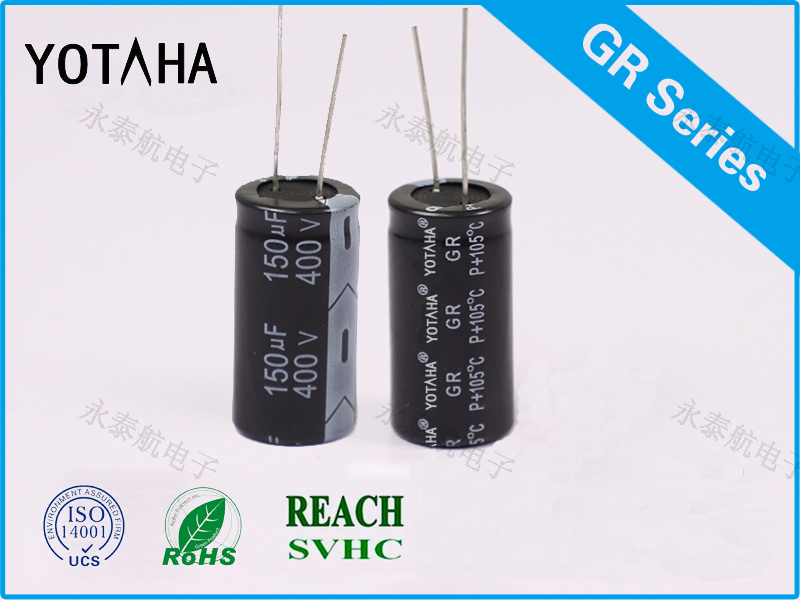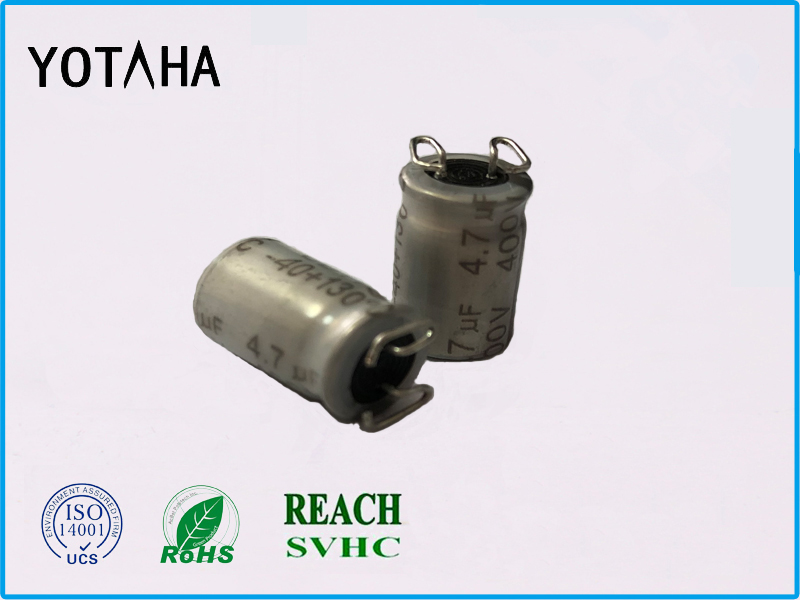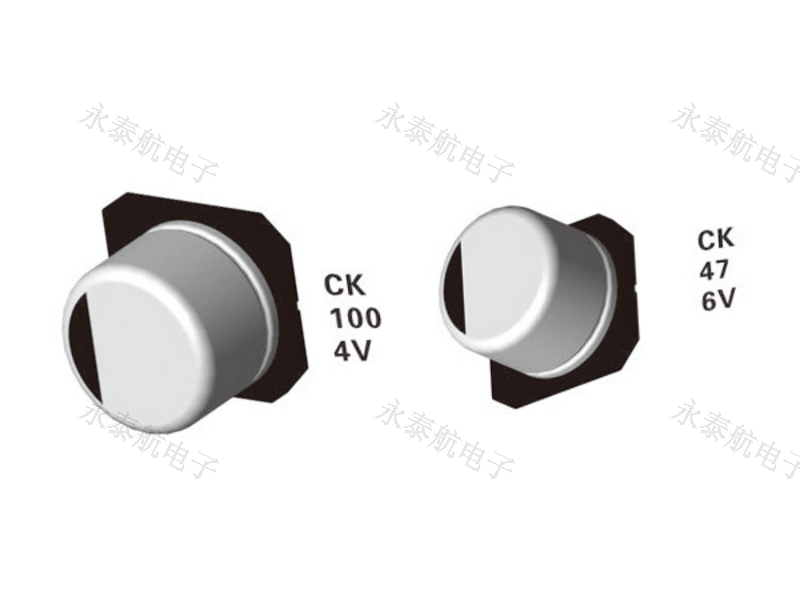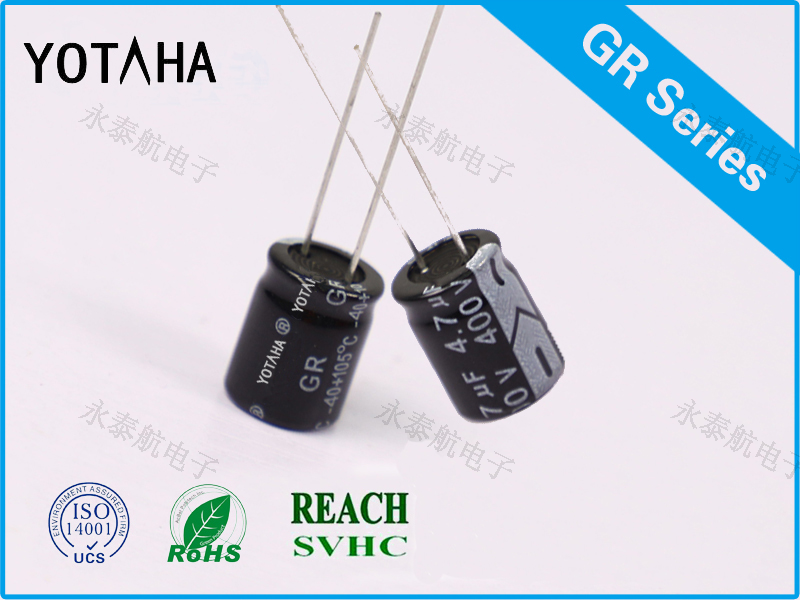Electrolytic capacitors are widely used in different fields of power electronics, mainly for smoothing, storing energy or filtering after AC voltage rectification, and also for non-precise timing delays. When predicting the MTBF of the switching power supply, the model analysis results show that the electrolytic capacitor is the main factor that affects the life of the switching power supply, so it is very important to understand and affect the factors that affect the life of the capacitor.
1. The life of an electrolytic capacitor depends on its internal temperature.
Therefore, the design and application conditions of the electrolytic capacitor will affect the life of the electrolytic capacitor. From a design perspective, the design method, material, and processing technology of electrolytic capacitors determine the life and stability of the capacitor. For the user, the operating voltage, ripple current, switching frequency, installation form, and heat dissipation method all affect the life of electrolytic capacitors.
2. Abnormal failure of electrolytic capacitor
Some factors can cause electrolytic capacitor failure, such as extremely low temperature, capacitor temperature rise (welding temperature, ambient temperature, AC ripple), excessive voltage, instantaneous voltage, VHF or reverse bias voltage; the temperature rise is correct Electrolytic capacitor working life (Lop) is the most influential factor.
The conductivity of the capacitor is determined by the ionization ability and viscosity of the electrolyte. When the temperature decreases, the viscosity of the electrolyte increases, and thus ion mobility and conductivity decrease. When the electrolyte is frozen, the ion mobility is so low that it has a very high electrical resistance. On the contrary, excessive heat will accelerate the evaporation of the electrolyte, and when the amount of electrolyte is reduced to a certain limit, the life of the capacitor will end. When working in high-cold areas (generally below -25°C), heating is required to ensure the normal operating temperature of the electrolytic capacitor. For example, outdoor UPSs are equipped with heating panels in Northeast my country.
Capacitors are easily broken down under overvoltage conditions, and surge voltages and instantaneous high voltages in practical applications often appear. In particular, my country has a vast territory and complex power grids in various regions. Therefore, AC power grids are very complicated, and often exceed 30% of the normal voltage, especially for single-phase input. Phase deviation will increase the normal range of AC input. Tests show that the commonly used 450V/470uF105℃ imported ordinary 2000-hour electrolytic capacitor, at a voltage of 1.34 times the rated voltage, the capacitor will leak liquid and gas after 2 hours, and the top will burst. According to statistics and analysis, the failure of the PFC output electrolytic capacitor of the communication switching power supply close to the grid is mainly due to grid surge and high voltage damage. The voltage selection of aluminum electrolytic capacitors is generally a two-stage derating, and it is reasonable to use it when it is reduced to 80% of the rated value.
3 Analysis of life influence factors
Except for abnormal failures, the life of electrolytic capacitors has an exponential relationship with temperature. Due to the use of non-solid electrolyte, the life of the electrolytic capacitor also depends on the evaporation rate of the electrolyte, which leads to a decrease in electrical performance. These parameters include capacitance, leakage current and equivalent series resistance (ESR).
Refer to RIFA's formula for life expectancy:
PLOSS=(IRMS)2xESR(1)
Th=Ta+PLOSSxRth(2)
Lop=Ax2Hours(3)
B=reference temperature value (typical value is 85℃)
A=The lifetime of the capacitor at the reference temperature (varies according to the diameter of the capacitor)
C=The number of degrees of temperature rise required to reduce the life of the capacitor by half
From the above formula, we can clearly see that several direct factors that affect the life of electrolytic capacitors: ripple current (IRMS) and equivalent series resistance (ESR), ambient temperature (Ta), transfer from hot spots to surroundings The total thermal resistance (Rth) of the environment. The point with the highest temperature inside the capacitor is called the hot spot temperature (Th). The hot spot temperature value is the main factor affecting the working life of the capacitor. The following factors determine the external temperature (ambient temperature Ta) in the actual application of the hot spot temperature value, the total thermal resistance (Rth) transferred from the hot spot to the surrounding environment, and the energy loss (PLOSS) caused by the alternating current. The internal temperature rise of the capacitor has a linear relationship with the energy loss.
When the capacitor is charged and discharged, the current will cause energy loss when flowing through the resistor, and the voltage change will also cause energy loss when passing through the dielectric, plus the energy loss caused by leakage current, all these losses result in the internal temperature of the capacitor Elevated.






